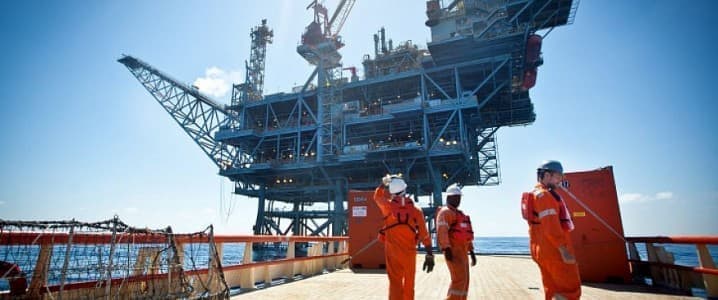
Natural gas prices are skyrocketing over the world, owing to a perfect storm of tight regional gas markets and Europe’s soaring electricity rates. The natural gas boom is not yet over, and new records can still be broken, especially if the approaching winter is colder than typical in the Northern Hemisphere. Europe is most affected by the natural gas shortage and the sky-high rise in energy prices. However, because of the growing interconnection of regional gas markets in the United States, Asia, and Europe in recent years, natural gas price spikes in one region can no longer disregard by markets in other regions.
Weather will be the most crucial driver for natural gas pricing and markets in the next months, economists believe, as the northern hemisphere prepares for the impending winter. And if the weather turns colder than usual, Europe will not be the only country to see a spike in energy prices.
The European gas supply shortage is “going to focus attention on this commodity. It is a matter of fact for some years,” says John Kilduff, who talked to CNBC this week with Again Capital.
Even before Winter, Europe is experiencing a perfect storm
In recent weeks, Europe’s tight gas market, low wind speeds, unusually low gas stockpiles, and record carbon pricing have conspired to propel benchmark gas prices on the continent and electricity costs in the world’s top economies to new highs.
Gas and power costs in Europe are climbing to new highs daily, putting pressure on governments as people protest rising power bills ahead of the winter heating season.
Related Article: Toyota’s Big Bet On Solid-State Batteries Could Boost The Entire Sector
Natural gas inventories in Europe are at their lowest level for September in recent memory, with only two weeks till the conclusion of the injection season. If this winter is anything like last year, when for longer periods temperatures were under average and inventories decreased during a cold snap in April, there is a significant supply shortfall on the market. These supplies could not be filled up fast enough since there was high demand in Asia, while supplies in Europe have declined as Russian exports have declined.
Despite a significant resurgence in European natural gas demand and rising prices this summer, Gazprom, the Russian energy behemoth, did not book more entry capacity to Europe via Ukraine.
According to analysts, this could have been an opportunistic move by Russia to push up Europe’s gas costs even more and profit from the current high prices. Other analysts believe that Gazprom’s effective cut in supplies will force Europe to acknowledge that European gas customers require the controversial Nord Stream 2 pipeline to Germany, which avoids Ukraine.
The Kremlin claims that Nord Stream 2 could save the day
Now that Russia has finished building Nord Stream 2 and is waiting for German regulatory approval to begin gas flows, the Kremlin claims that a swift approval and launch of the pipeline will help to bring Europe’s skyrocketing costs under control.
On Wednesday, Kremlin spokesperson Dmitry Peskov stated, “Obviously, commissioning of Nord Stream 2 as soon as feasible will greatly balance natural gas price parameters in Europe, particularly on the spot market.”
Whether Gazprom’s reduced summer gas supply was a power play or the result o unplanned outages, the truth remains that they contributed to Europe’s present gas shortfall.
The European gas shortage raises US prices and LNG exports
In today’s integrated regional gas markets, record-high European prices drive up benchmark prices in the United States as well.
Francisco Blanch, Head of Commodity and Derivatives Strategy at Bank of America (BANA) told CNBC, “The United States is an island, although there has been growing connectivity between the United States and the global market in the last three or four years.
“From a 50% correlation to a 95% correlation, we’ve come a long way. This is dragging the U.S. market around,” Blanch said.
The Henry Hub price in the United States achieved its highest level in seven and a half years on Wednesday, “seemingly piggybacking off European prices,” according to a note published by Natural Gas Intelligence by Bespoke Weather Services.
Related Article: Chevron CEO: Shareholder Returns Are More Important Than Solar, Wind Investment
High gas demand in Europe and Asia, as well as high Asian spot LNG prices, even during the off-peak season, are pushing record LNG shipments from the United States. High LNG exports, in turn, limit domestic US gas supply, despite relatively flat production in recent months and the fact that 39% of US Gulf of Mexico gas production was still shut down as of September 15, more than two weeks after Hurricane Ida prompted platform evacuations in the area.
Analysts believe that the good early fall weather will help to lower natural gas prices in the United States.
Yet, as Lindsay Schneider of RBN Energy reported last week, the worldwide natural gas/LNG supply crisis is setting the way for record winter prices.
“High demand for LNG and the cascading effect of a supply bottleneck in Europe, brought on by the triple danger of poor domestic production, decreased imports from Russia, and a scarcity of incremental LNG cargoes,” Schneider says.
“Not only is this causing record-high gas prices and increasing volatility right now, but the limited inventory indicates that prices will remain high for the rest of the heating season,” the energy analyst explained.
For Oilprice.com, by Tsvetana Paraskova